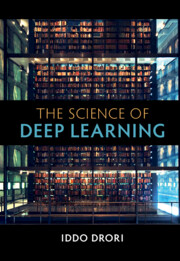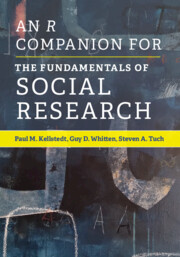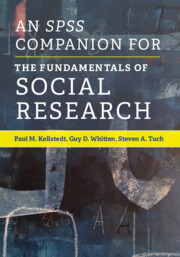Refine search
Actions for selected content:
36901 results in Cambridge Textbooks
Biblical Aramaic Glossary
-
- Book:
- Biblical Aramaic and Related Dialects
- Published online:
- 08 September 2022
- Print publication:
- 29 September 2022, pp 367-388
-
- Chapter
- Export citation
4 - Basics of Quantum Information Processing
-
- Book:
- Quantum Mechanics for Tomorrow's Engineers
- Published online:
- 06 June 2023
- Print publication:
- 29 September 2022, pp 62-89
-
- Chapter
- Export citation
3 - Mathematical Machinery and Conceptual Foundations
-
- Book:
- Quantum Mechanics for Tomorrow's Engineers
- Published online:
- 06 June 2023
- Print publication:
- 29 September 2022, pp 34-61
-
- Chapter
- Export citation
Appendix - Hollow Verb Paradigm
- from Appendices
-
- Book:
- Biblical Aramaic and Related Dialects
- Published online:
- 08 September 2022
- Print publication:
- 29 September 2022, pp 360-363
-
- Chapter
- Export citation
Chapter 14 - Clauses
-
- Book:
- Biblical Aramaic and Related Dialects
- Published online:
- 08 September 2022
- Print publication:
- 29 September 2022, pp 219-242
-
- Chapter
- Export citation

The Science of Deep Learning
-
- Published online:
- 23 September 2022
- Print publication:
- 18 August 2022
-
- Textbook
- Export citation

An R Companion for The Fundamentals of Social Research
-
- Published online:
- 23 September 2022
- Print publication:
- 08 September 2022
-
- Textbook
- Export citation

An SPSS Companion for The Fundamentals of Social Research
-
- Published online:
- 23 September 2022
- Print publication:
- 08 September 2022
-
- Textbook
- Export citation
6 - Implication and Compactness
-
- Book:
- Modern Mathematical Logic
- Published online:
- 08 December 2022
- Print publication:
- 22 September 2022, pp 165-212
-
- Chapter
- Export citation
List of Notation
-
- Book:
- Modern Mathematical Logic
- Published online:
- 08 December 2022
- Print publication:
- 22 September 2022, pp 498-499
-
- Chapter
- Export citation
9 - Ordinals, Cardinals, and Choice
-
- Book:
- Modern Mathematical Logic
- Published online:
- 08 December 2022
- Print publication:
- 22 September 2022, pp 303-348
-
- Chapter
- Export citation
1 - Introduction
-
- Book:
- Modern Mathematical Logic
- Published online:
- 08 December 2022
- Print publication:
- 22 September 2022, pp 1-10
-
- Chapter
- Export citation
Acknowledgments
-
- Book:
- Environmental Management
- Published online:
- 30 November 2022
- Print publication:
- 22 September 2022, pp xx-xxii
-
- Chapter
- Export citation
11 - Computable Sets and Functions
-
- Book:
- Modern Mathematical Logic
- Published online:
- 08 December 2022
- Print publication:
- 22 September 2022, pp 367-436
-
- Chapter
- Export citation
Index
-
- Book:
- Modern Mathematical Logic
- Published online:
- 08 December 2022
- Print publication:
- 22 September 2022, pp 500-502
-
- Chapter
- Export citation
Brief Contents
-
- Book:
- Environmental Management
- Published online:
- 30 November 2022
- Print publication:
- 22 September 2022, pp v-vi
-
- Chapter
- Export citation
8 - Axiomatic Set Theory
-
- Book:
- Modern Mathematical Logic
- Published online:
- 08 December 2022
- Print publication:
- 22 September 2022, pp 253-302
-
- Chapter
- Export citation
7 - Model Theory
-
- Book:
- Modern Mathematical Logic
- Published online:
- 08 December 2022
- Print publication:
- 22 September 2022, pp 213-252
-
- Chapter
- Export citation
Case Study: The Case of Implementing a Pollution Prevention Program to Reduce the Risks of Pests and Pesticides in Children
-
- Book:
- Environmental Management
- Published online:
- 30 November 2022
- Print publication:
- 22 September 2022, pp 256-301
-
- Chapter
- Export citation
Preface
-
- Book:
- Environmental Management
- Published online:
- 30 November 2022
- Print publication:
- 22 September 2022, pp xvii-xix
-
- Chapter
- Export citation
